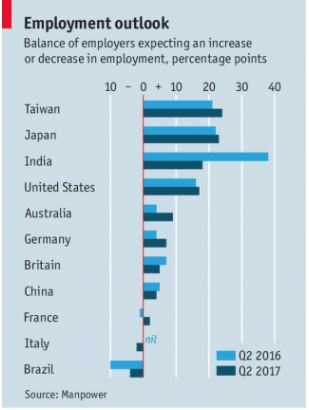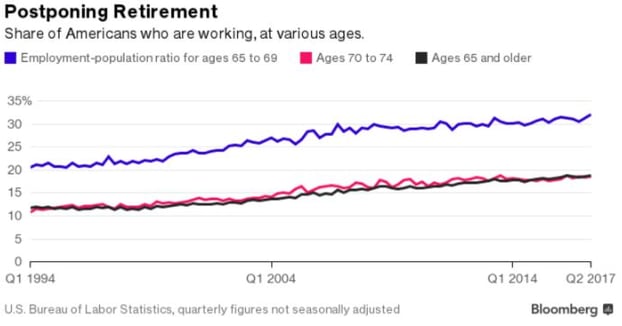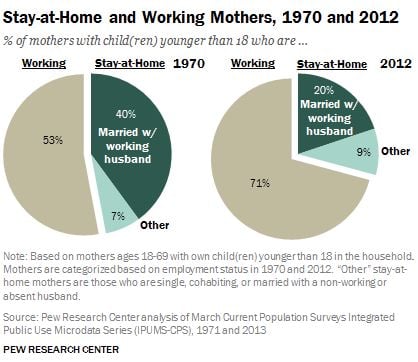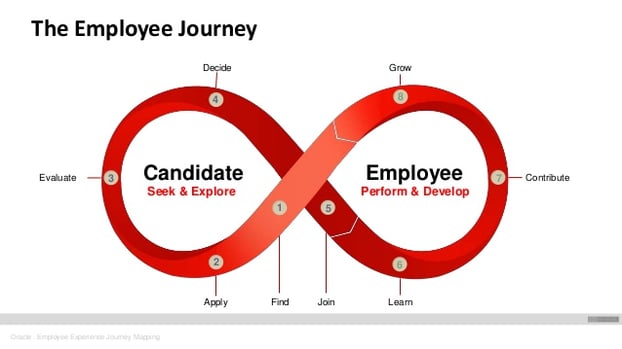Finding top employees who fit in the company culture is a challenge for recruiting managers. If you're actively looking for new employees, following these tips will help you increase the possibilities of the best match.
.jpg?width=621&height=325&name=1200x627%20(3).jpg)
It's a fact that 90% of employers expect greater competition for talent. With this limited talent pool, booming sectors, and evolving market demands, savvy recruiters will rely on relevant channels to communicate employer branding and candidate experience.
Bourgeoning industries are hiring. Professional, business and scientific services are fields that expect a +30% increase in hiring compared to last year. Another industry driving the upward trend is information services, which covers everything from broadcasting and telecommunications businesses to fast-growing tech like Arista Networks and Veeva Vault. Employers in the sector expect to hire 60% more employees this year compared with last, the largest increase of any sector.
Globally Taiwan, Japan, United States, Australia and Germany top the list of countries with the greatest expected increase in employment. The vacancies need to be filled with the most promising talent to meet the business goals related to the forecasted growth.

Finding talent comes with a price. The average cost-per-hire is $4,129, according to a 2016 Society for Human Resource Management survey. In the UK the estimated cost is 3000£. Correspondingly, it takes an average of 42 days to fill a job opening.
Hiring expenditures as with any other investment comes with a desired ROI. Recruiters will see a greater return when streamlining the process from the start.
Follow these tips to improve your next candidate pool
Environment to attract and keep talent
Employer branding is key to attracting potential hires to a company. Market perception of your organization shapes opinions of future employees. Key components of this branding is the company culture, work environment, EVP and employee benefits.
In fact, in the top 5 of things that attract a job seekerare company culture and life-work balance are in the top 5 things that attract a candidate to a company.
As many as 84 % of employees would actually consider leaving their current job if offered a job by a company with an excellent reputation. Building a strong workplace culture not only attracts, but helps keep employees from seeking other opportunities.
Leverage the right channels
Establish, manage, and increase company brand visibility through online and mobile channels to connect with candidates. These numbers speak to the importance of listening to social networks and adapting content to mobile:
- 86% of job seekers in the first 10 years of their careers use social media in their job search,
- but 75% say their employer does not--or does not know how to--promote their brand on social media.
- 54 percent of job seekers read company reviews from employees on their mobiles.
Be clear on what you need for the job
Take the time to write down in words what you are looking for and what you need the new hire to accomplish. Job descriptions help identify particular skills or abilities that are necessary for a position. A good job description tells the applicant what the position involves or requires.
The clearer the description, the better a candidate can self-qualify before completing and submitting an application. A well-written job description allow applicants to decide whether they are not a good fit or are not interested in it.
Include skills and set immediate, mid-term and first year goals for the job. Show dimension and reach of the job by including who the person will interact with including job titles, collaborators and who the position reports to. Include potential for growth or development opportunities to show mutual commitment.

Streamline the process by including an assessment or personality matching test. Add a fun factor to the recruiting process that candidates link to company culture. Use a game app for business like Atrivity to learn more about and filter the candidates based on results with set of custom questions .
Widen your pool
Many recruiters look for younger talent to develop internally. Consider diversity to enrich the workplace with new, different and experienced perspectives. In today's quickly evolving business environment, organisations can leverage a variety of mindsets to get to more creative and sound solutions. Aside from college recruits, two groups to tap into are mothers and senior executives.
Many professionals are retiring later, age expectancy is rising and senior executives try to retire and realise they need to work for self-fulfilment. Last quarter, 32 percent of Americans 65 to 69 were employed.

As of 2016 in the U.S. 33% of women hold a bachelor's degree or higher, 1% more than men. Women who decide to go back to work for a variety of reasons. A study in Asia shows that 28% re-enter to learn new skills while 18% say work is more fulfilling.
Working mothers have a real-life skills set directly applicable to productivity in the workplace. Soft skills training like organization, communication, and time-management are typically programmed into MBAs or Executive curricula are taught, but difficult to internalize and put into practice.

Whether you're hiring to develop and groom for succession pool, widen the age and tap into working mothers to access soft skills and experience to increase the performance bar overall. In faster moving markets and fast-changing rules rigid hierarchy is being replaced by flatter organizations. This invites a more fluid exchange of new energy and seasoned employees that grow on new insights, perspectives, and know-how.
Broadening and diversifying your target candidate pool not only increases applicants, but also comes with value-added skills sets that enrich overall company culture and employee experience.
Hire the Smartest Person You Can Find
Hire for strengths; don't expect to develop weak areas of performance, habits, and talents. Build on what is great about your new employee in the first place. Does the candidate have the emotional intelligence, core analytical and technical skills and potential to reach your goals? Will training make up for the gaps? There are skills you will be able to train for. Also consider where your organisation could benefit as the employee evolves. At the same time you'll be able to develop a track for development to keep new hire motivation up while reducing turnover.
Simplified processes will avoid fall-off
60% of the applicants quit the process because it was too long. The candidate experience should be treated the same way marketing thinks about customer experience.
The application process has its own user journey. The potential hire has self-qualified after reading the clear job description and convinced after reading curated employee branding content. Now it's time to finalise the "purchase".

Just as a marketer is concerned with user click-through rates to sales, a recruiter should be with visitor to application submission rates up through decision.
Shorten the time it takes to find you, understand your company culture, and to finally complete an application.
Allow for links to further information, uploading for CV, and include minimal number of open-ended questions, maximum 3 with a maximum number of words or characters. The purpose of open-ended questions is for you to get to know the candidate and to give the applicant an opportunity to stand out.
Keep the talent you've invested in
During the selection process discover what the candidate is looking for and match to your company's growth plans. Frame your hiring process in long-term goals by thinking 5 years down the line for you and the candidate.
60% of employers are highly concerned of filling vacancies so once you've found the right person, it's important to keep them motivated. This starts with good onboarding. Engage the new hire even before day 1 on the job. Longer and structured onboarding lead to shortened time to productivity and higher retention rates. Using gamified training keeps employees motivated and helps them remember what they've learned in in-person training sessions.



.jpg)



